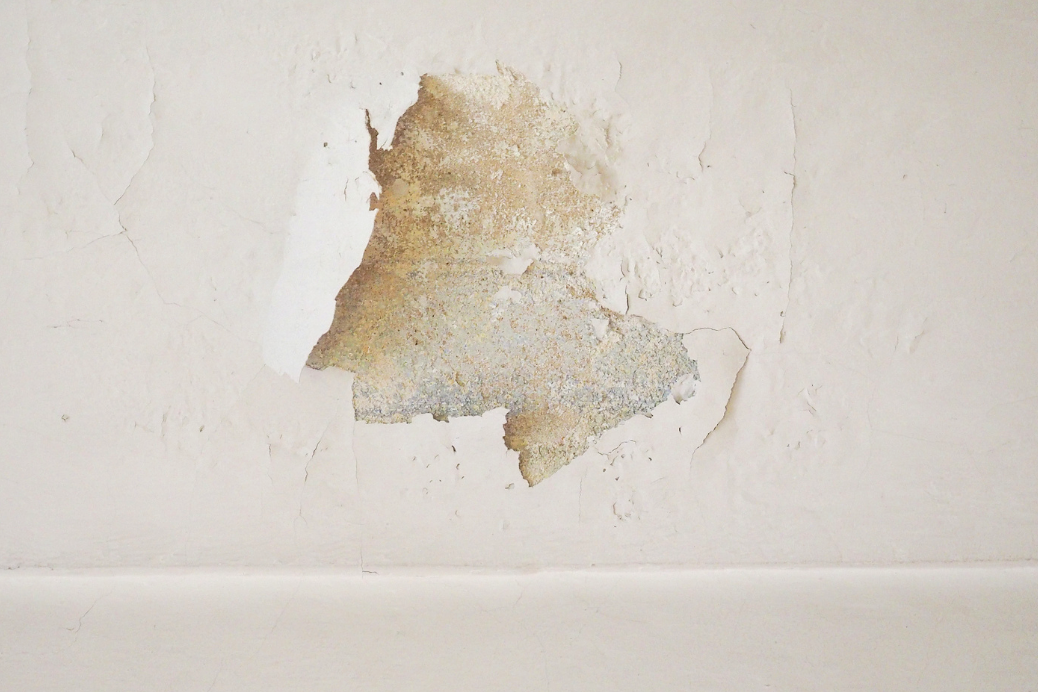Since moving in, we have seen signs of damp develop in our entrance hallway and in the downstairs guest toilet. We’ve spent a fair amount of time examining the walls and the floors, and we’ve discovered that finding the causes of damp are often difficult to diagnose because the problems are hidden and can be concealed.
There are many types of damp, and the classic one is probably rising damp. As the term implies, this form consists of moisture rising from the ground and making its way through porous walls and floors. This is (we think) what we’re dealing with in our hallway where a small area has been affected. The damp, while not obvious, has discoloured the slate tiles slightly, and bubbled some plaster.
Then you get penetrating damp, which we think we have in our downstairs guest toilet. This is usually caused by precipitation where the moisture penetrates into the house from strong, driving rain. Rain water can also penetrate through the top of walls, parapets or via the roof.
The window in question, where we have seen the damp in the downstairs toilet, is a weather bearing wall that gets hammered by strong rain, and we think that the rain must be at play as the source of this damp. The damp has affected and bubbled the plaster on just one side of the window.
What’s also quite interesting is that the drive to insulate and seal homes to make them more energy and heat efficient has increased, and this process can exacerbate some symptoms of damp, and can lead to damp caused by condensation.
In our case, to remedy the damp, we’ve got a partial plan in mind. We think that the window that’s been affected in the downstairs bathroom has something to do with the pointing (where it’s been potentially compromised) on the exterior brickwork that’s leading to water ingress. This summer we will conduct an investigation and undertake to address and fix the pointing. A new skillset potentially beckons.
The hallway is a tricker proposition, because the source of the damp is coming ‘through’ heavy slate tiles on the floor. We don’t know if it’s connected, but we have a Victorian well situated about five metres from where the damp has been found, so we don’t know whether it’s subterraneous water that’s causing the rising damp. We will continue to monitor it, and if it doesn’t stop or improve we may have to call some professionals in to help identify the cause and implement a solution.
